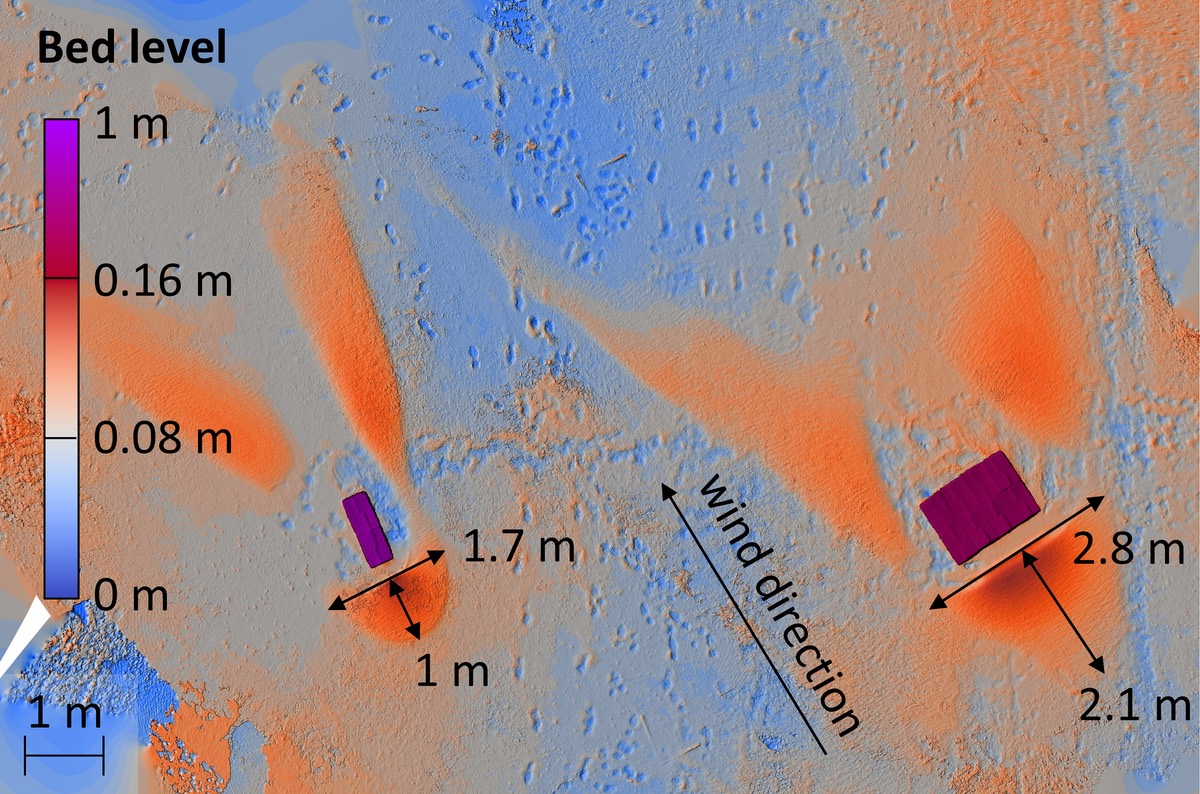Downloads
DOI:
https://doi.org/10.47982/rius.7.136Keywords:
beach-dune modelling, urbanized shore, coastal spatial design, building with nature, wind-driven sediment dynamicsAbstract
The long-term physical existence of sandy shores critically depends on a balanced sediment budget. From the principles of Building with Nature it follows that a sustainable protection of sandy shores should employ some form of shore nourishment. In the spatial design process of urbanized sandy shores, where multiple functions must be integrated, the knowledge and the prediction of sediment dynamics and beach-dune morphology thus play an essential role. This expertise typically resides with coastal scientists who have condensed their knowledge in various types of morphological models that serve different purposes and rely on different assumptions, thus have their specific strengths and limitations. This paper identifies morphological information needs for the integrated spatial design of urbanized sandy shores using BwN principles, outlines capabilities of different types of morphological models to support this and identifies current gaps between the two. A clear mismatch arises from the absence of buildings and accompanying human activities in current numerical models simulating morphological developments in beach-dune environments.
How to Cite
Published
Issue
Section
References
Berends, K. D., Scheel, F., Warmink, J. J., de Boer, W. P., Ranasinghe, R., & Hulscher, S. J. M. H. (2019). Towards efficient uncertainty quantification with high-resolution morphodynamic models: A multifidelity approach applied to channel sedimentation. Coastal Engineering, 152, 103520. https://doi.org/10.1016/j.coastaleng.2019.103520
Boers, M., Van Geer, P., & Van Gent, M. (2011). Dike and dune revetment impact on dune erosion. In: M. Mizuguchi & S.Sato (Eds.), The Proceedings of Coastal Sediments 2011, 810-823. doi: 10.1142/9789814355537_0061
Boeschoten, J. C. (1961, January). Stuifdijken op Terschelling en Vlieland (No. 330267). Ministerie van Verkeer en Waterstaat, Rijkswaterstaat, Directie Friesland (RWS, FR). https://puc.overheid.nl/rijkswaterstaat/doc/PUC_122849_31/1/
Fackrell, J. E. (1984). Parameters characterising dispersion in the near wake of buildings. Journal of Wind Engineering and Industrial Aerodynamics, 16(1), 97–118. https://doi.org/10.1016/0167-6105(84)90051-5
Fonstad, M. A. (2013). 2.9 Cellular Automata in Geomorphology. In J. F. Shroder (Ed.), Treatise on Geomorphology (pp. 117–134). Academic Press. https://doi.org/10.1016/B978-0-12-374739-6.00035-X
Galiforni Silva, F., Wijnberg, K. M., de Groot, A. V., & Hulscher, S. J. M. H. (2019). The effects of beach width variability on coastal dune development at decadal scales. Geomorphology, 329, 58–69. https://doi.org/10.1016/j.geomorph.2018.12.012
Galiforni-Silva, F., Wijnberg, K. M., de Groot, A. V., & Hulscher, S. J. M. H. (2018). The influence of groundwater depth on coastal dune development at sand flats close to inlets. Ocean Dynamics, 68(7), 885–897. https://doi.org/10.1007/s10236-018-1162-8
Hallin, C. (2019). Long-term beach and dune evolution: Development and application of the CS-model (Doctoral dissertation, Lund University). https://lup.lub.lu.se/search/publication/e850cf42-d671-4790-ab62-7c43830e7f6a
Jackson, N. L., & Nordstrom, K. F. (2011). Aeolian sediment transport and landforms in managed coastal systems: A review. Aeolian Research, 3(2), 181–196. https://doi.org/10.1016/j.aeolia.2011.03.011
Keijsers, J. G. S., De Groot, A. V., & Riksen, M. J. P. M. (2016). Modeling the biogeomorphic evolution of coastal dunes in response to climate change. Journal of Geophysical Research: Earth Surface, 121(6), 1161–1181. https://doi.org/10.1002/2015jf003815
Lazarus, E. D., Ellis, M. A., Brad Murray, A., & Hall, D. M. (2016). An evolving research agenda for human–coastal systems. Geomorphology, 256, 81–90. https://doi.org/10.1016/j.geomorph.2015.07.043
Liu, M., Zhang, Q., Fan, F., & Shen, S. (2018). Experiments on natural snow distribution around simplified building models based on open air snow-wind combined experimental facility. Journal of Wind Engineering and Industrial Aerodynamics, 173, 1–13. https://doi.org/10.1016/j.jweia.2017.12.010
Martinuzzi, R., & Tropea, C. (1993). The Flow Around Surface-Mounted, Prismatic Obstacles Placed in a Fully Developed Channel Flow (Data Bank Contribution). Journal of Fluids Engineering, 115(1), 85–92. https://doi.org/10.1115/1.2910118
Muller, J., Figlus, J., & de Vries, S. (2018). Xbeach Simulation of Hybrid Coastal Protection: A Galveston Seawall Test Case. Coastal Engineering Proceedings, 1(36), papers.100. https://doi.org/10.9753/icce.v36.papers.100
Ozmen, Y., Baydar, E., & van Beeck, J. P. A. J. (2016). Wind flow over the low-rise building models with gabled roofs having different pitch angles. Building and Environment, 95, 63–74. https://doi.org/10.1016/j.buildenv.2015.09.014
Poppema, D. W., Wijnberg, K. M., Mulder, J. P., & Hulscher, S. J. (2019, May). Scale experiments on aeolian deposition and erosion patterns created by buildings on the beach. In P. Wang, J. D. Rosati, & M. Vallee (Eds.), Coastal Sediments 2019: Proceedings of the 9th International Conference (pp. 1693–1707). World Scientific. https://doi.org/10.1142/9789811204487_0146
Psuty, N. P. (2008). The Coastal Foredune: A Morphological Basis for Regional Coastal Dune Development. In M. L. Martínez & N. P. Psuty (Eds.), Coastal Dunes. Ecological Studies (Vol. 171, pp. 11–27). Springer. https://doi.org/10.1007/978-3-540-74002-5_2
Roelvink, D., & Costas, S. (2019). Coupling nearshore and aeolian processes: XBeach and duna process-based models. Environmental Modelling & Software, 115, 98–112. https://doi.org/10.1016/j.envsoft.2019.02.010
Smallegan, S. M., Irish, J. L., Van Dongeren, A. R., & Den Bieman, J. P. (2016). Morphological response of a sandy barrier island with a buried seawall during Hurricane Sandy. Coastal Engineering, 110, 102–110. https://doi.org/10.1016/j.coastaleng.2016.01.005
Van Bergen, J., Mulder, J., Poppema, D, Nijhuis, S., Wijnberg, K. & Kuschnerus, M. (2021). Urban dunes: towards design principles for dune formation at urbanized shores. Research in Urbanism Series, 7, 101-128. https://doi.org/10.47982/rius.7.130
Van Onselen, E. P. (2018). Analysing measures to improve beach-dune interaction in the presence of man-made structures using computational fluid dynamics (CFD). Report Internship at Hoogheemraadschap Hollands Noorderkwartier. University of Utrecht.
Visser, P. J., Vrijling, J. K., & Verhagen, H. J. (1991). A field experiment on breach growth in sand-dikes. In B.L. Edge (Ed.), Coastal Engineering 1990 (pp. 2087-2100).
Vuik, V., van Vuren, S., Borsje, B. W., van Wesenbeeck, B. K., & Jonkman, S. N. (2018). Assessing safety of nature-based flood defenses: Dealing with extremes and uncertainties. Coastal Engineering, 139, 47–64. https://doi.org/10.1016/j.coastaleng.2018.05.002
Wiggs, G. F. S., Livingstone, I., & Warren, A. (1996). The role of streamline curvature in sand dune dynamics: evidence from field and wind tunnel measurements. Geomorphology, 17(1–3), 29–46. https://doi.org/10.1016/0169-555x(95)00093-k
Zandmotor. (2017, July 9). Juli 2017 Zandmotor vanuit noord [Photograph]. Flickr. https://www.flickr.com/photos/zandmotor/35632520843/





